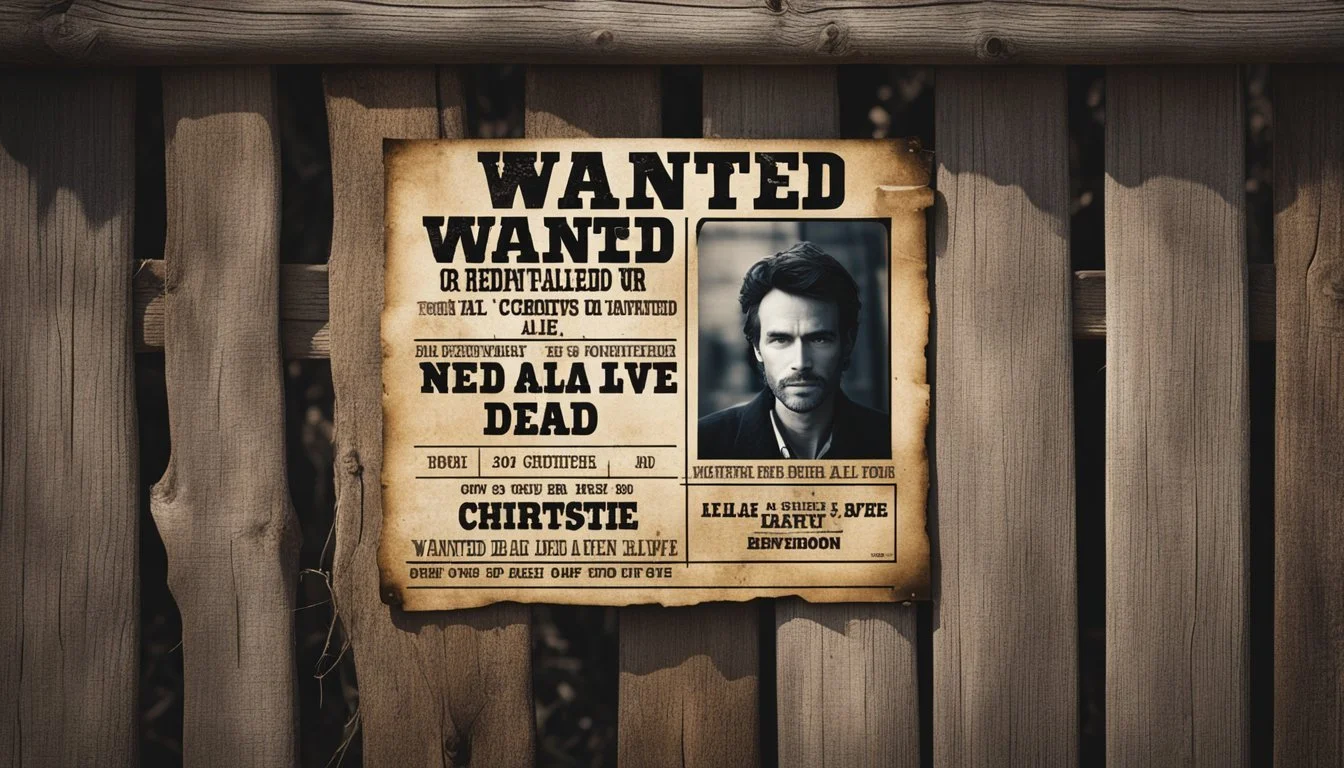5 Ned Christie Documentaries That Challenge His Outlaw Status
Reexamining the Cherokee Lawman's Legacy
Ned Christie's legacy as a Cherokee figure has been the subject of debate and reexamination in recent years. Long portrayed as an outlaw in popular culture, new historical research and perspectives have challenged this characterization. These documentaries explore Christie's life and times, shedding light on the complex factors that shaped his reputation and actions in late 19th century Indian Territory.
Several filmmakers have produced documentaries that take a critical look at the traditional narrative surrounding Ned Christie. By examining primary sources and incorporating Cherokee oral histories, these films present a more nuanced view of Christie as a man caught between two worlds during a tumultuous period of change for the Cherokee Nation. The documentaries consider how issues of sovereignty, racism, and sensationalized media coverage influenced perceptions of Christie both in his time and in subsequent decades.
1) Blood and Thunder: The Story of Ned Christie (2005)
Blood and Thunder: The Story of Ned Christie presents a nuanced portrayal of the Cherokee statesman. The documentary challenges the traditional outlaw narrative surrounding Christie's life.
Interviews with historians and Cherokee Nation members provide context for the complex political landscape of Indian Territory in the late 19th century. The film explores Christie's role as a Cherokee National Councilman and his advocacy for tribal sovereignty.
Archival footage and reenactments bring to life the events leading up to Deputy U.S. Marshal Daniel Maples' death in 1887. The documentary examines the evidence against Christie and questions the fairness of his pursuit by law enforcement.
The film highlights Christie's five-year evasion of capture and the controversial circumstances of his death in 1892. It also addresses the lasting impact of Christie's story on Cherokee identity and the broader narrative of Native American resistance.
More information on Blood and Thunder: The Story of Ned Christie
2) Outlaw Justice: The Ned Christie Saga
Outlaw Justice: The Ned Christie Saga (2015) explores the complex legacy of Ned Christie, a Cherokee statesman often portrayed as an outlaw. The documentary examines Christie's role as a member of the Cherokee Nation senate and advisor to Principal Chief Dennis Bushyhead.
It delves into Christie's support for Cherokee sovereignty and his efforts to resist white encroachment. The film challenges the sensationalized portrayal of Christie in newspapers and popular media of the time.
Through interviews with historians and Christie's descendants, the documentary presents a more nuanced view of his life and actions. It examines the political and social context of Indian Territory in the late 19th century.
The film also addresses the events leading to Christie's standoff with U.S. marshals and his ultimate death in 1892. It questions the accuracy of his portrayal as a notorious outlaw and explores alternative perspectives on his motivations and actions.
Link to more information about the film
3) The True Adventures of Ned Christie
The True Adventures of Ned Christie (2015) presents a balanced exploration of the controversial Cherokee figure. This documentary challenges the long-held perception of Christie as an outlaw, offering a more nuanced perspective on his life and legacy.
Directed by Cherokee filmmaker Jeremy Charles, the film delves into Christie's role as a respected Cherokee statesman and gunsmith. It examines the events surrounding the 1887 murder of Deputy U.S. Marshal Daniel Maples, for which Christie was wrongfully accused.
The documentary features interviews with Cherokee historians and Christie's descendants. These accounts provide insight into Christie's character and the political climate of the Cherokee Nation during his time.
Through careful research and compelling storytelling, The True Adventures of Ned Christie invites viewers to reconsider Christie's place in history. It sheds light on the complexities of Native American-U.S. relations in the late 19th century.
Learn more about the film on IMDb
4) Ned Christie's War: A Deep Dive
"Ned Christie's War" explores the complex conflict between Cherokee councilman Ned Christie and U.S. lawmen in Indian Territory during the late 1880s. The documentary examines the events surrounding Deputy Marshal Daniel Maples' death in 1887 and Christie's subsequent five-year evasion of authorities.
The film presents evidence challenging Christie's portrayal as an outlaw. It delves into his role as a respected Cherokee leader and advisor to Chief Dennis Bushyhead. The documentary highlights the political tensions between the Cherokee Nation and the U.S. government during this period.
Interviews with historians and Cherokee community members provide context for Christie's actions. The film examines the tactics used by lawmen to pursue Christie, including the destruction of his home with dynamite.
"Ned Christie's War" offers a nuanced perspective on the confrontation, questioning the accuracy of historical accounts that labeled Christie as a criminal. It sheds light on the complexities of law enforcement in Indian Territory and the challenges faced by Native Americans in the late 19th century.
Learn more about Ned Christie's conflict with U.S. authorities
5) The Kendrick Project: Revisiting Ned Christie (2018)
The Kendrick Project offers a fresh perspective on Ned Christie's life and legacy. This documentary challenges the traditional outlaw narrative surrounding the Cherokee blacksmith and politician.
Filmmaker John Kendrick delves into historical records and interviews with Cherokee scholars to present a more nuanced portrayal. The film explores Christie's role as a respected member of the Cherokee National Council and his skills as a gunsmith.
Kendrick's work sheds light on the complex political landscape of Indian Territory in the late 19th century. It examines how Christie's opposition to land cessions may have contributed to his controversial reputation.
The documentary also investigates the circumstances surrounding Deputy U.S. Marshal Daniel Maples' death, for which Christie was accused. It presents evidence that casts doubt on his involvement in the murder.
Through careful research and compelling storytelling, The Kendrick Project encourages viewers to reconsider Ned Christie's place in history. It highlights the importance of examining multiple perspectives when interpreting historical events.
More information on The Kendrick Project
Historical Context of Ned Christie's Era
The late 19th century in Indian Territory was marked by complex social dynamics and evolving law enforcement practices. This period shaped the environment in which Ned Christie lived and the events that led to his controversial status.
Socio-Political Climate
The Cherokee Nation faced significant challenges during Ned Christie's lifetime. Tensions between the U.S. government and Native American tribes remained high following forced relocations. The Cherokee people struggled to maintain their sovereignty and cultural identity.
Tribal governments operated under constant pressure from federal authorities. This created a complex political landscape where loyalties were often divided. Economic hardships and land disputes further complicated relationships within the territory.
The aftermath of the Civil War left lasting impacts on the region. Many Cherokee had fought on both sides, leading to internal divisions. Reconstruction efforts often overlooked the needs of Native communities, exacerbating existing problems.
Law Enforcement Practices
Law enforcement in Indian Territory during this era was a patchwork of tribal, federal, and local authorities. U.S. Marshals held significant power but often lacked cultural understanding of the communities they policed.
Jurisdictional conflicts were common, creating gaps in enforcement and confusion among residents. Tribal police forces operated alongside federal agents, sometimes leading to tense interactions.
Corruption and bias plagued the justice system. False accusations and rushed judgments were not uncommon, particularly against Native Americans. The concept of "outlaws" was sometimes applied loosely, with political motivations influencing legal decisions.
Limited resources and vast territories made effective law enforcement challenging. This environment allowed for the rise of both genuine criminals and wrongly accused individuals like Ned Christie.
Reevaluating Ned Christie's Legacy
Recent research and documentaries have shed new light on Ned Christie's life and role in Cherokee society. These works challenge long-held perceptions and present a more nuanced view of his actions and motivations.
Challenging the Outlaw Label
Ned Christie's portrayal as an outlaw stemmed from his alleged involvement in the 1887 murder of Deputy U.S. Marshal Daniel Maples. However, modern investigations have cast doubt on this accusation.
Court records and family stories suggest Christie may have been falsely accused. He maintained his innocence throughout the five-year manhunt that followed.
The destruction of Christie's home with dynamite and his subsequent death at the hands of a Fort Smith posse have been reexamined in recent years. These events are now seen by some as examples of excessive force and injustice.
Christie as a Cherokee Statesman
Before the accusations against him, Ned Christie held a respected position in Cherokee society. He served as a national councilman and advisor to Chief Dennis Bushyhead.
Christie's political views were shaped by his traditional Cherokee background. He opposed tribal land allotment, a stance that put him at odds with federal policies of the time.
As a blacksmith and gunsmith, Christie contributed to his community's economic life. His election to the Cherokee Executive Council in 1885 reflects the trust placed in him by his peers.
Christie's role as a Keetoowah, a group dedicated to preserving Cherokee culture, highlights his commitment to his heritage. This aspect of his life is often overshadowed by the outlaw narrative.




